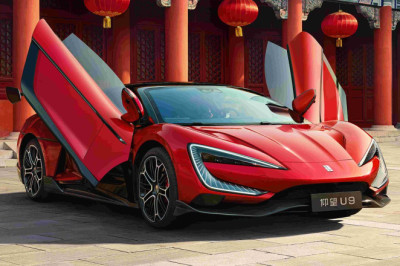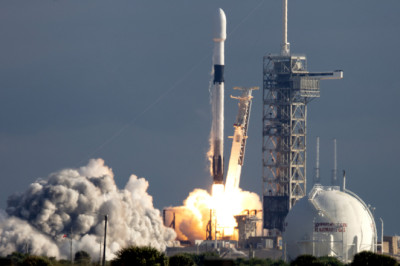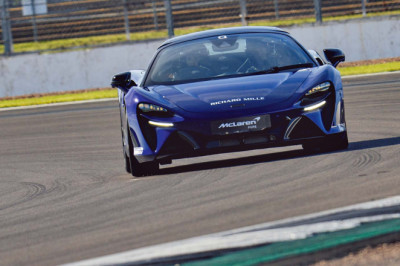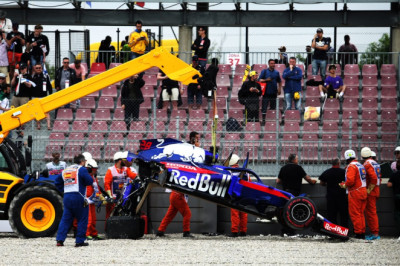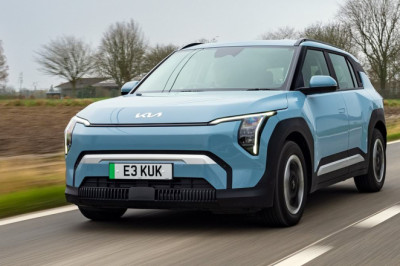
1. IT WASN'T ALWAYS CALLED 'CAMARO'

During the design and initial construction of the Chevrolet Camaro, the car had the name "Panther." The 1965 concept bore the Panther emblem, and it retained the name until just a few weeks before the car debuted. However, Chevy always intended to give its Mustang competitor a "C" name to conform to its Corvette, Chevelle, and Corvair models.
It became one of the most iconic muscle cars in American, but no one knew what the Camaro name meant when it was introduced in 1966. GM claimed it was an old French slang term for friendship and camaraderie. Rumor has it that GM executives told the press the Camaro is “a small, vicious animal that eats Mustangs.” Other accounts claimed it meant a rare disease that kills horses (i.e. Mustangs).
2. THE FIRST CAMARO COST LESS THAN SOME OPTIONS ON THE NEW ONE

In 1967 the average household income was $7,305 per year, the cost of a new house was $14,425, a movie ticket sold for $1.25, and a gallon of gasoline required just 33 cents.
The base price of the debut Camaro was a mere $2,572. Fifty years later that amount won't even pay for the Camaro's RS appearance package with 20-inch wheels valued at $1,950 and the $800 Technology Package including an 8-inch touchscreen display.
Adjusted for inflation, $2,572 in 1967 dollars is equal to $19,668.22 in today’s dollars. According to the National Automobile Dealers Association, that sum is not enough to purchase a 2018 Camaro with no options at a price of $25,700.
3. CAMAROS ARE USED AS POLICE CARS (WHERE ELSE BUT DUBAI?)

Famous for their obsession for speed, in 2013 the Dubai Police force added Camaro SS coupes to their fleet of patrol cars. It was the first Camaro to be selected by a Middle East police force.
The Camaro SS is powered by a 6.2L V8 engine that boasts 426 hp and a torque of 420 lb-ft. With a top speed of 160 mph and acceleration of 0-60 mph in 4.7 seconds, the Camaro had the performance to meet Dubai Police force requirements.
“The Camaro is highly regarded around the world. It is the ideal car for Dubai Police as we look to upgrade our vehicles to meet the Emirate’s world-renowned standards in safety and security,” said Dubai Deputy Police Chief Major General Khamis Mattar Al Mazeina.
4. THE OFFICIAL CAMARO ANNOUNCEMENT WAS ALSO THE WORLD'S FIRST MASS TELECONFERENCE

With current technology and the Internet, teleconferences and video conferences are commonplace. However, in 1966 when Chevy scheduled the launch and announcement of the Camaro (Panther) the communication technology was a bit more primitive.
On June 28th, more than 200 journalists and the Chevy PR team assembled at hotels in fourteen American cities to hear the conference call announcement. It was the first large-scale teleconference requiring more than Bell 100 technicians on-hand to ensure success.
Although the "Panther" name was dropped before production, it did make it into the press release when the car was launched. Chevy's used an unusual PR campaign to promote the launch. It was billed as the first and last ever meeting of SEPAW, or "the Society for the Eradication of Panthers from the Automotive World." And so the Camaro was born!
5. CAMARO STATION WAGON ... ARE YOU KIDDING ME?

Although the station wagon body style has its appeal to a specific segment of the car-buying public, a growing family is a perfect example. It is one better left to cars not destined to be among the highest performing muscle cars ever manufactured.
Never-the-less, Chevy considered producing a Camaro station wagon right up until the launch. Cooler heads prevailed, and the idea was abandoned. However, the concept reared its ugly head again for the second generation but was summarily disregarded.
Had Chevy gone ahead with the station wagon Camaro, who knows what other bizarre vehicles may have developed, like the Mustang Minivan, the Corvette Camper or the Dodge Viper hatchback?
6. INSPIRED BY A CLASSIC FERRARI (YES YOU READ THAT RIGHT)

Perhaps best known for the famous actor, Steve McQueen, who owned one, the classic Ferrari Lusso 250 GT was also an inspiration to GM designers when they created the second-generation Camaro. The body style similarities are apparent when compared side by side.
Other features of the two cars are vastly different. Ferrari only made 350 units, making them extremely rare. The first year of the second-generation, 1970, GM made nearly 125,000 Camaros.
The Ferrari Lusso 250 GT was equipped with a 3.0 L V12 "Colombo" engine that produced 240hp and 178 lb-ft of torque. It was the fastest passenger car of the period with a maximum speed of 150 mph and an acceleration of 0-60 mph in 7 seconds. The 1970 Camaro SS boasted 6.5 L L78 rated at 350 hp.
7. THE NEIMAN MARCUS EDITION CAMARO COST OVER $30,00 MORE THAN THE STANDARD CAMARO, FOR SOME FANCY TRIM

Phone lines opened at noon on Tuesday, October 19 and it was over in just three minutes; the time it took for one hundred limited-edition Neiman Marcus Chevrolet Camaro Convertibles to sell out. The convertible was available only in a special Bordeaux red hue with “ghost” racing stripes.
Powered by a 426 hp LS3 engine coupled to a 6-speed manual or automatic transmission, extensive engineering was required to transform a coupe to a convertible.
More than just a fancy paint job, the windshield surround was painted silver, the cabin was finished in amber leather with red accents on the center console, steering wheel, and gear shift knob. The $75,000 Neiman Marcus version was sold at a premium of roughly $30-40,000 over car's price in the standard format.
8. THE FIRST PILOT PROTOTYPE CAMARO (NO. 10001) STILL EXISTS

The very first Camaro, pilot prototype number 100001, was assembled at the GM Assembly Plant, at Norwood, Ohio, just down the road from Cincinnati, on May 21, 1966.
The company planned to built Camaros in Norwood and at their Van Nuys, Los Angeles plant. Forty-nine pilot prototypes were built in Norwood to develop the equipment and assembly line required for the planned high volume, serial production. At the Van Nuys plant, Chevy built three pilot prototypes eight weeks later in preparation for manufacturing and assembly there.
Amazingly, the first pilot prototype Camaro (No. 10001), pictured here, still exists. The Historic Vehicle Association (HVA) has added this special machine to its National Historic Vehicle Register.
9. THE SIXTH GEN CAMARO WENT ON A STRICT WEIGHT LOSS ROUTINE

Engineers were so obsessed about the fifth-generation Z/28’s weight that they shaved 0.3mm from the rear window. They saved 400 grams by going from 3.5 mm to 3.2 mm. Other weight saving measures included using less foam padding in the rear seat, and killing the A/C completely.
10. "PSST, HEY, I'LL HAVE THE COPO, BUT KEEP IT ON THE D-LO."

The 1969 COPO Camaro was the ultimate off-menu item. Chevy’s 427 cid engine never appeared on any order sheets and wasn’t a part of any official package. You had to know who to call at GM in order to get one. The COPO, or Central Office Production Order, roughly doubled the cost of the car. Today, it's one of the most highly sought after, and priciest, Camaros in the collector world.
The story goes like this. A GM corporate edict forbade Chevrolet from installing engines larger than 400 cu in (6.6 L). Requests from dealers (notably Don Yenko) who were dealer-installing 427 cu (7.0 L) engines in the Camaro caused Chevrolet to use an ordering process usually used on fleet and special orders (taxis, trucks, etc.) to offer 427 engines in the Camaro. Two Central Office Production Orders (COPO), numbers 9560 and 9561, were offered in the 1969 model year.
The COPO 9561 used the solid-lifter L72 big-block engine, making an underrated 425 hp (317 kW) SAE gross at 5600 rpm and 460 lb⋅ft (624 N⋅m) of torque at 4000 rpm. Yenko ordered 201 of these cars to create the now-legendary Yenko Camaro. Other dealers also became aware of the L72 engine package and ordered it. Around 900-1,000 Camaros were fitted with the L72 engine option.






